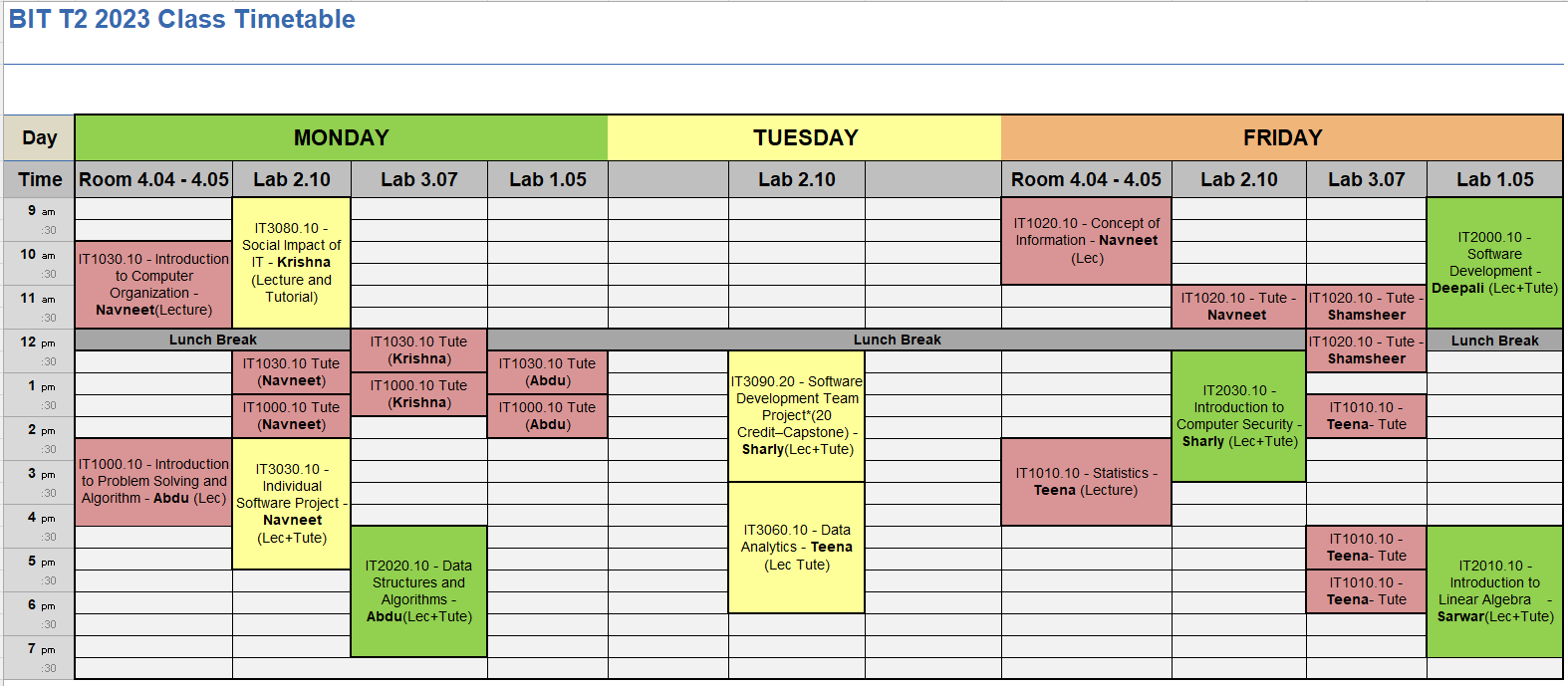
Information related to the program, referencing guides, forms and other details.
- Teacher: Dr. Ochini Madanayake
This subject introduces problem solving in computing and helps students develop confidence and competence in it. The process of Polya’s problem solving cycle involves the following four steps: Understanding (to fully comprehend the problem), Designing (using any related or similar problems that have already been solved as well as checking the sample inputs and expected outputs), Writing (to write the solution as a step-by-step algorithm using an appropriate language) and Reviewing (to look back at the finished solution). The idea of an algorithm as a step-by-step description of a problem solution is emphasised. Decomposing a complex problem into several simpler problems is discussed. Refining a developed algorithm and implementing it is explained.
This subject introduces problem solving in computing and helps students develop confidence and competence in it. The process of Polya’s problem solving cycle involves the following four steps: Understanding (to fully comprehend the problem), Designing (using any related or similar problems that have already been solved as well as checking the sample inputs and expected outputs), Writing (to write the solution as a step-by-step algorithm using an appropriate language) and Reviewing (to look back at the finished solution). The idea of an algorithm as a step-by-step description of a problem solution is emphasised. Decomposing a complex problem into several simpler problems is discussed. Refining a developed algorithm and implementing it is explained.
- Teacher: Teena Arora
This subject introduces problem solving in computing and helps students develop confidence and competence in it. The process of Polya’s problem solving cycle involves the following four steps: Understanding (to fully comprehend the problem), Designing (using any related or similar problems that have already been solved as well as checking the sample inputs and expected outputs), Writing (to write the solution as a step-by-step algorithm using an appropriate language) and Reviewing (to look back at the finished solution). The idea of an algorithm as a step-by-step description of a problem solution is emphasised. Decomposing a complex problem into several simpler problems is discussed. Refining a developed algorithm and implementing it is explained.
This subject introduces problem solving in computing and helps students develop confidence and competence in it. The process of Polya’s problem solving cycle involves the following four steps: Understanding (to fully comprehend the problem), Designing (using any related or similar problems that have already been solved as well as checking the sample inputs and expected outputs), Writing (to write the solution as a step-by-step algorithm using an appropriate language) and Reviewing (to look back at the finished solution). The idea of an algorithm as a step-by-step description of a problem solution is emphasised. Decomposing a complex problem into several simpler problems is discussed. Refining a developed algorithm and implementing it is explained.

This subject introduces problem solving in computing and helps students develop confidence and competence in it. The process of Polya’s problem solving cycle involves the following four steps: Understanding (to fully comprehend the problem), Designing (using any related or similar problems that have already been solved as well as checking the sample inputs and expected outputs), Writing (to write the solution as a step-by-step algorithm using an appropriate language) and Reviewing (to look back at the finished solution). The idea of an algorithm as a step-by-step description of a problem solution is emphasised. Decomposing a complex problem into several simpler problems is discussed. Refining a developed algorithm and implementing it is explained.
This subject introduces problem solving in computing and helps students develop confidence and competence in it. The process of Polya’s problem solving cycle involves the following four steps: Understanding (to fully comprehend the problem), Designing (using any related or similar problems that have already been solved as well as checking the sample inputs and expected outputs), Writing (to write the solution as a step-by-step algorithm using an appropriate language) and Reviewing (to look back at the finished solution). The idea of an algorithm as a step-by-step description of a problem solution is emphasised. Decomposing a complex problem into several simpler problems is discussed. Refining a developed algorithm and implementing it is explained.
This subject introduces problem solving in computing and helps students develop confidence and competence in it. The process of Polya’s problem solving cycle involves the following four steps: Understanding (to fully comprehend the problem), Designing (using any related or similar problems that have already been solved as well as checking the sample inputs and expected outputs), Writing (to write the solution as a step-by-step algorithm using an appropriate language) and Reviewing (to look back at the finished solution). The idea of an algorithm as a step-by-step description of a problem solution is emphasised. Decomposing a complex problem into several simpler problems is discussed. Refining a developed algorithm and implementing it is explained.
